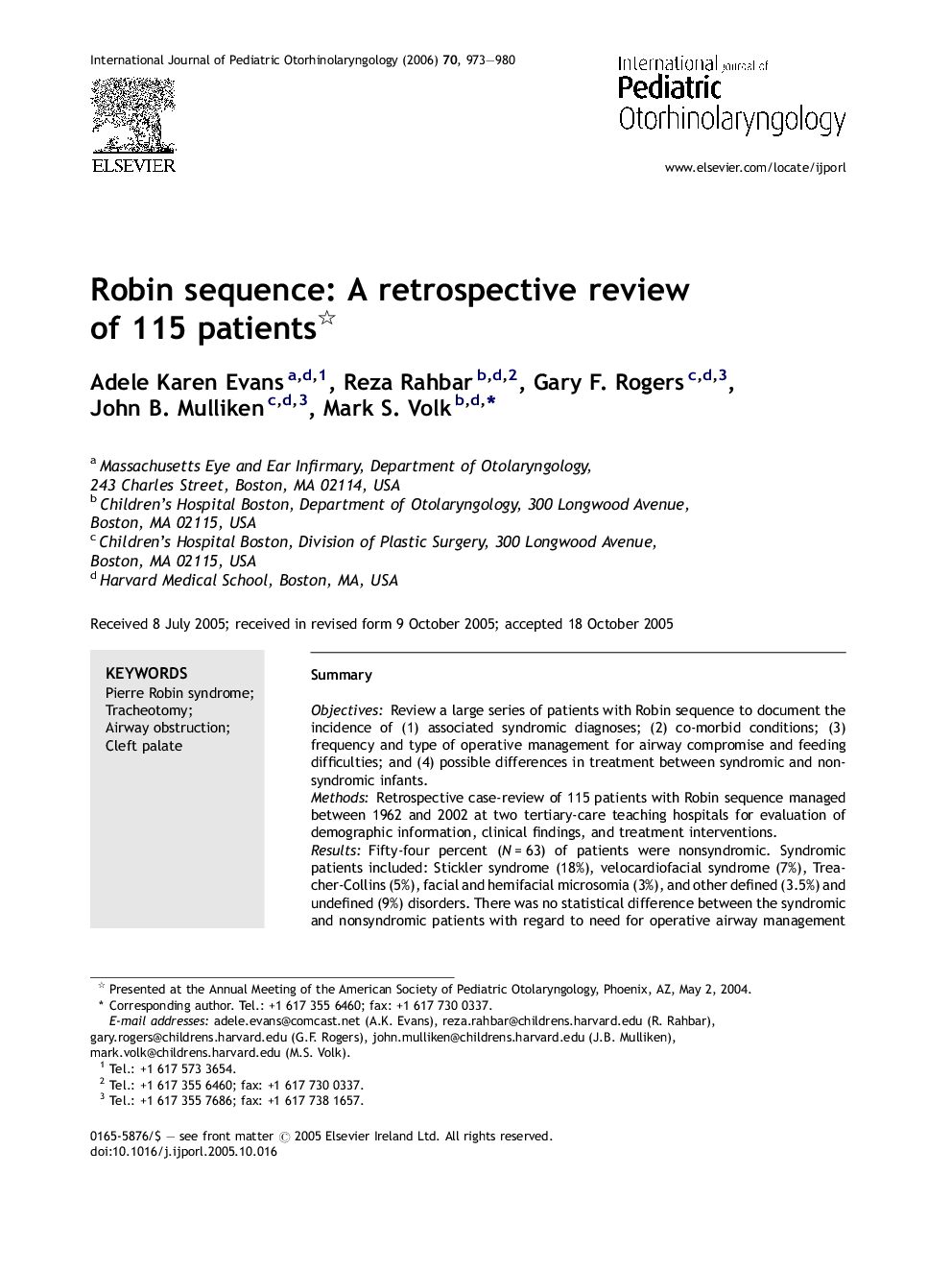| Article ID | Journal | Published Year | Pages | File Type |
|---|---|---|---|---|
| 4115852 | International Journal of Pediatric Otorhinolaryngology | 2006 | 8 Pages |
SummaryObjectivesReview a large series of patients with Robin sequence to document the incidence of (1) associated syndromic diagnoses; (2) co-morbid conditions; (3) frequency and type of operative management for airway compromise and feeding difficulties; and (4) possible differences in treatment between syndromic and nonsyndromic infants.MethodsRetrospective case-review of 115 patients with Robin sequence managed between 1962 and 2002 at two tertiary-care teaching hospitals for evaluation of demographic information, clinical findings, and treatment interventions.ResultsFifty-four percent (N = 63) of patients were nonsyndromic. Syndromic patients included: Stickler syndrome (18%), velocardiofacial syndrome (7%), Treacher-Collins (5%), facial and hemifacial microsomia (3%), and other defined (3.5%) and undefined (9%) disorders. There was no statistical difference between the syndromic and nonsyndromic patients with regard to need for operative airway management (Fisher's exact test, p = 0.264). Forty-two percent of patients required a feeding gastrostomy tube to correct feeding difficulties. Patients with a syndromic diagnosis were more likely to be developmentally delayed.Fifty-one (44%) patients underwent operative airway management: 61% underwent tongue–lip adhesion and 39% underwent tracheotomy. Fifteen percent of patients initially had tongue–lip adhesion subsequently required tracheotomy. While the preferred treatment for respiratory compromise differed between the two institutions, the percentage of patients requiring operative intervention was similar.ConclusionsThe pathogenesis of Robin sequence is multifactorial and syndromic in nearly half of the patients. Operative treatment of respiratory failure was required in 44% of infants; the rate was similar in both hospitals. The operative approach differed significantly between the institutions, however, based on the philosophy and training of the managing surgical specialty. Co-morbid factors such as baseline cardiopulmonary and neurologic status did not play a significant role in surgical decision making.
